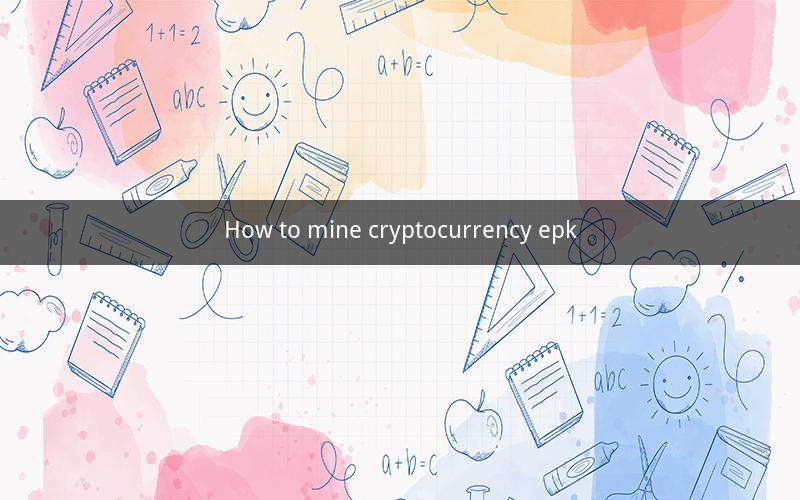
Table of Contents
1. Introduction to Cryptocurrency Mining
2. Understanding the Basics of Cryptocurrency
3. The Importance of Mining in the Cryptocurrency Ecosystem
4. The Process of Cryptocurrency Mining
4.1. Hardware Requirements
4.2. Software Requirements
4.3. Electricity Consumption
4.4. Mining Pools
5. Choosing the Right Cryptocurrency to Mine
6. The Role of Cryptocurrency Exchanges in Mining
7. Keeping Your Mining Rig Secure
8. The Future of Cryptocurrency Mining
9. Conclusion
Introduction to Cryptocurrency Mining
Cryptocurrency mining is the process of validating and adding new transactions to a cryptocurrency's public ledger, known as the blockchain. Miners use their computers to solve complex mathematical problems, and in return, they receive cryptocurrency as a reward. This article will discuss the basics of cryptocurrency mining, the importance of mining in the cryptocurrency ecosystem, and how to get started.
Understanding the Basics of Cryptocurrency
Cryptocurrency is a digital or virtual currency that uses cryptography for security. Unlike traditional currencies, cryptocurrencies are not controlled by any central authority, such as a government or bank. Instead, they operate on a decentralized network of computers, known as the blockchain.
The most popular cryptocurrency is Bitcoin, which was created in 2009. Since then, thousands of other cryptocurrencies have been developed, each with its unique features and purpose.
The Importance of Mining in the Cryptocurrency Ecosystem
Mining plays a crucial role in the cryptocurrency ecosystem. It ensures the security, integrity, and decentralization of the blockchain. Here are some key reasons why mining is important:
1. Security: Miners help secure the network by validating transactions and preventing fraud.
2. Decentralization: Mining ensures that the blockchain remains decentralized, as it requires a network of computers to validate transactions.
3. Consensus: Mining helps maintain consensus among the network by reaching an agreement on the validity of transactions.
4. Incentivization: Miners are incentivized to participate in the network by receiving cryptocurrency rewards.
The Process of Cryptocurrency Mining
Mining involves several steps, including hardware and software requirements, electricity consumption, and joining a mining pool.
Hardware Requirements
To mine cryptocurrencies, you need a computer with specialized hardware. The most common type of hardware used for mining is an ASIC (Application-Specific Integrated Circuit) miner. These miners are designed specifically for mining and can perform complex calculations much faster than traditional CPUs or GPUs.
The following are some popular ASIC miners for mining different cryptocurrencies:
1. Bitmain Antminer S19 Pro
2. Bitmain Antminer L7
3. Canaan Avalonminer 1246
4. Ebang Ebit E11++
5. Innosilicon T3
Software Requirements
In addition to hardware, you need software to manage your mining rig. The following are some popular mining software options:
1. CGMiner
2. BFGMiner
3. EasyMiner
4. MultiMiner
5. NiceHash
Electricity Consumption
Mining requires a significant amount of electricity. Therefore, it's essential to consider your electricity costs when setting up a mining rig. You can calculate your mining profitability using online mining profitability calculators.
Mining Pools
Mining pools are groups of miners who work together to increase their chances of finding a block. When a block is found, the rewards are distributed among the pool members based on their contribution.
Choosing the Right Cryptocurrency to Mine
Choosing the right cryptocurrency to mine depends on several factors, including the mining difficulty, reward amount, and market demand. Some popular cryptocurrencies to mine include Bitcoin, Ethereum, Litecoin, and Dogecoin.
The Role of Cryptocurrency Exchanges in Mining
Cryptocurrency exchanges play a crucial role in mining by allowing miners to sell their cryptocurrency for fiat currency. This enables miners to cover their expenses and reinvest in their mining operations.
Keeping Your Mining Rig Secure
To protect your mining rig and prevent theft, it's essential to keep it secure. This includes using a strong password, encrypting your data, and keeping your mining rig in a safe location.
The Future of Cryptocurrency Mining
The future of cryptocurrency mining is uncertain, but it's expected to evolve. Some potential trends include:
1. The rise of quantum computing, which could make mining more difficult.
2. The development of more efficient mining hardware.
3. Increased regulatory scrutiny.
Conclusion
Cryptocurrency mining is a complex but rewarding process. By understanding the basics, choosing the right cryptocurrency, and setting up a mining rig, you can start mining and contribute to the cryptocurrency ecosystem.
Questions and Answers
1. What is cryptocurrency mining?
- Cryptocurrency mining is the process of validating and adding new transactions to a cryptocurrency's public ledger, known as the blockchain.
2. What is the importance of mining in the cryptocurrency ecosystem?
- Mining ensures the security, integrity, and decentralization of the blockchain.
3. What are the hardware requirements for cryptocurrency mining?
- The most common type of hardware used for mining is an ASIC (Application-Specific Integrated Circuit) miner.
4. What software is needed for cryptocurrency mining?
- Some popular mining software options include CGMiner, BFGMiner, EasyMiner, MultiMiner, and NiceHash.
5. How can I calculate my mining profitability?
- You can calculate your mining profitability using online mining profitability calculators.
6. What are mining pools, and how do they work?
- Mining pools are groups of miners who work together to increase their chances of finding a block.
7. How can I choose the right cryptocurrency to mine?
- Choosing the right cryptocurrency depends on several factors, including the mining difficulty, reward amount, and market demand.
8. What role do cryptocurrency exchanges play in mining?
- Cryptocurrency exchanges allow miners to sell their cryptocurrency for fiat currency, enabling them to cover their expenses and reinvest in their mining operations.
9. How can I keep my mining rig secure?
- To protect your mining rig and prevent theft, use a strong password, encrypt your data, and keep your mining rig in a safe location.
10. What is the future of cryptocurrency mining?
- The future of cryptocurrency mining is uncertain, but it's expected to evolve with the rise of quantum computing, more efficient mining hardware, and increased regulatory scrutiny.